Examining Catalase Activity: Mechanisms and Impact


Intro
Catalase stands as one of nature's powerful enzymes, serving an often-underappreciated role in cellular biology. The enzyme specializes in breaking down hydrogen peroxide, a potentially harmful byproduct of metabolic processes, into harmless components: water and oxygen. In cells, where oxidative stress can lead to significant damage, the presence of catalase is crucial. It’s interesting to think about how everyday cellular reactions can lead to the generation of such aggressive compounds like hydrogen peroxide. In this context, the enzyme’s activity emerges not just as a biochemical curiosity, but as a linchpin in the safeguarding of cellular integrity.
Understanding catalase is not merely an academic endeavor; it has practical implications that ripple through various fields. The mechanism by which catalase operates, regulatory factors affecting its activity, and its involvement in health and disease make it a focal point for research at the crossroads of biochemistry and medicine. As we delve into the dynamic functions of catalase, it becomes apparent that this seemingly simple enzyme weaves a complex tapestry of life-sustaining processes. Catalase does not just stand as a barrier against oxidative damage; it also plays a role in broader biological systems, including implications in drug development and aging. In this article, we will peel back the layers surrounding this essential enzyme to showcase its significance in modern science.
Foreword to Catalase
Catalase is an essential enzyme that plays a pivotal role in cellular defense mechanisms, particularly in the regulation of oxidative stress. The function it serves is not merely biochemical but fundamentally linked to the overall vitality of living organisms. Understanding catalase is crucial because its activity impacts various biological processes, from metabolism to aging. As reactors to both environmental and internal stimuli, enzymes like catalase are at the forefront of maintaining cellular health, making their study both relevant and necessary in various scientific fields.
The relevance of catalase becomes even more apparent when considering the consequences of its dysfunction. Catalase protects the body by breaking down hydrogen peroxide, a potentially harmful byproduct of metabolic processes. If this enzyme is absent or its activity is compromised, cells face oxidative damage, which can culminate in a range of diseases, from cancer to neurodegenerative disorders. Thus, understanding catalase is not merely an academic exercise; it has tangible implications for health and disease.
Defining Catalase
Catalase is a tetrameric enzyme, composed of four subunits, and is recognized for its remarkable ability to convert hydrogen peroxide into water and oxygen. This reaction occurs rapidly, highlighting catalase's efficiency—the reaction can process millions of hydrogen peroxide molecules every second.
In biochemistry, the significance of this reaction cannot be overstated; hydrogen peroxide is a potent oxidizing agent that poses a risk to cellular structures. The function of catalase ensures that hydrogen peroxide levels are kept in check, thus safeguarding cells and preserving their integrity. This enzyme is found in nearly all living organisms, particularly those exposed to high levels of oxygen, such as animals and plants. Through its catalytic activity, catalase not only facilitates a key detoxification pathway but also supports overall cellular function.
History and Discovery
The historical context surrounding the discovery of catalase is as fascinating as the enzyme itself. The first detailed studies date back to the 19th century when the enzyme was isolated from various biological sources. The term "catalase" was coined by the German chemist Hugo Weidel in 1900, who conducted experiments demonstrating its ability to catalyze the decomposition of hydrogen peroxide. It quickly garnered attention for its efficiency and specificity, laying the groundwork for future research.
In subsequent decades, a myriad of studies unveiled the complex structure of catalase, its kinetic properties, and its crucial role in cellular metabolism. By the mid-20th century, the significance of catalase in health and disease began to emerge, prompting further investigation into its regulatory mechanisms and physiological implications. Today, not only is catalase an enzyme of interest in biochemistry, but it has also become central to understanding processes such as oxidative stress, aging, and even therapeutic strategies in fields like cancer treatment.
By investigating catalase through a comprehensive view of its definitions and historical milestones, it becomes evident how an enzyme integral to cellular health has evolved into a focal point for research and innovation. Understanding its role better can illuminate pathways that enhance not only biological performance but also potential therapeutic interventions.
Biochemical Functionality
In the realm of biochemistry, the significance of catalase cannot be overstated. As one of the most vital enzymes, catalase plays a crucial role in cellular processes by catalyzing the breakdown of hydrogen peroxide, a potentially harmful byproduct of metabolic activities, into innocuous water and oxygen. This enzymatic action is fundamental not just for cellular health but for overall organismal homeostasis. Understanding its biochemical functionality provides insights into how organisms manage oxidative stress, maintain cellular integrity, and protect against free radical damage.
Moreover, catalase serves as a model for studying enzymatic kinetics and reaction mechanisms, offering a clearer picture of how proteins function at a molecular level. By examining catalase, researchers can derive broader principles that apply to various enzymes, enhancing our understanding of biological processes at large.
Catalase Enzyme Structure
Active Site Configuration
The active site of catalase is particularly notable for its composition. Centered around a heme group, it is configured to swiftly bind hydrogen peroxide. This specific arrangement is essential because the heme group contains iron, which is vital for the enzyme's catalytic transformations. This characteristic makes the active site not only effective but also efficient, allowing rapid turnover rates of substrate to product.
One unique feature of the active site configuration is the presence of hydrophobic residues that help facilitate substrate entry while also stabilizing the transition states during the reaction. However, this does come with a disadvantage: the specificity of catalase can sometimes lead to competitive inhibition, whereby similar substrates may reduce its efficiency.
Enzyme Kinetics
When discussing enzyme kinetics, catalase presents an intriguing subject of study. The reaction rates of catalase have been investigated extensively, demonstrating a classic Michaelis-Menten relationship. One key characteristic of catalase kinetics is its apparent efficiency, as it can process millions of hydrogen peroxide molecules every second. This high catalytic efficiency underlines its importance in living organisms, particularly in environments where oxidative stress is prevalent.
A noteworthy aspect of catalase enzyme kinetics is its response to various external factors, including temperature and pH. For instance, while catalase generally operates optimally at neutral pH, extreme conditions can lead to denaturation or reduced activity. This dual nature serves as both an advantage, showcasing catalase's robust nature, and a disadvantage, revealing its sensitivity to environmental influences.
Reaction Mechanism
Substrate Interaction
The way catalase interacts with its substrate is a key component of its functionality. Hydrogen peroxide binds at the active site, where the enzyme stabilizes the substrate and facilitates a series of rapid reaction steps. One of the core features of substrate interaction is the enzyme's ability to induce strain in the hydrogen peroxide molecule, making it easier to break apart into water and oxygen.
The relationship between catalase and its substrate is characterized by its specificity; it effectively discriminates hydrogen peroxide from other peroxides through the geometry of its active site. However, this specificity can limit the enzyme's utility in certain conditions, as its affinity does not extend to other reactive oxygen species that might also be harmful.
Product Formation
Product formation is perhaps the most significant aspect of catalase’s action. The decomposition of hydrogen peroxide results in the rapid production of water and oxygen gas, which are harmless and vital for cellular processes. This product formation illustrates the enzyme's role in detoxifying reactive oxygen species, thereby offering protection against oxidative stress and cellular damage.
The rapid generation of products not only highlights the efficiency of catalase but also poses a challenge under high substrate concentrations, as the enzyme may become saturated. Thus, while product formation is a desirable outcome, it also necessitates careful regulation within the cellular environment to prevent excessive oxidative stress from hydrogen peroxide.
"In the midst of chaos, catalase emerges as a champion, safeguarding cells from the perils of oxidative damage."
Factors Affecting Catalase Activity
Understanding the factors affecting catalase activity is crucial for comprehending how this enzyme operates in various biological contexts. Catalase's main role—detoxifying hydrogen peroxide—can be significantly influenced by different environmental parameters and specific biochemical interactions. Through this section, we analyze key aspects such as environmental conditions, substrate concentrations, and the presence of inhibitors and activators that ultimately define the efficiency of catalase activity. Recognizing these factors not only helps to better evaluate catalase's performance but also aids in exploring its practical uses in biotechnology and medicine.
Environmental Conditions
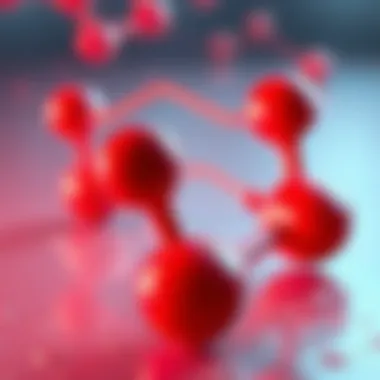
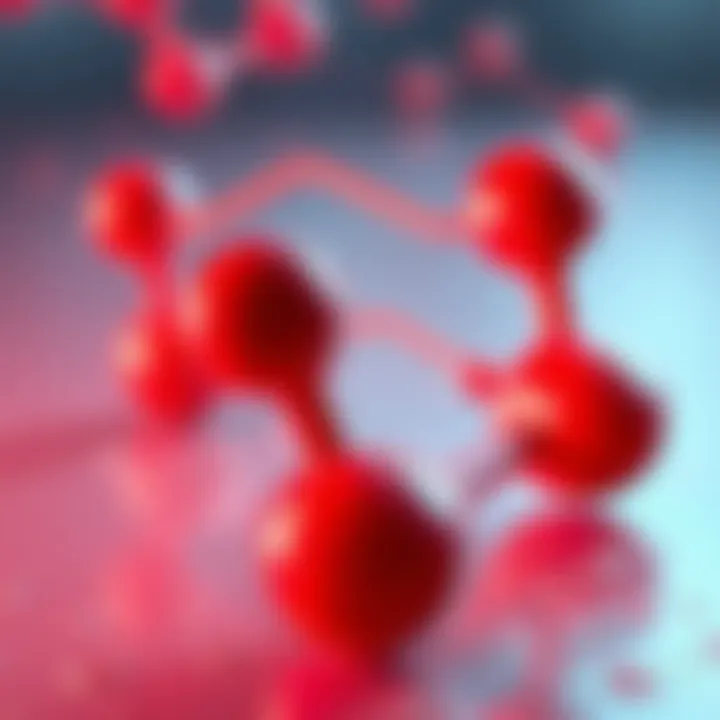
pH Levels
pH levels play a pivotal role in determining the catalase's activity. Each enzyme, including catalase, has an optimal pH range within which it performs best. For catalase, this range tends to be around pH 7 to 8. A slightly alkaline environment promotes the structural integrity of the enzyme, ensuring that it retains an appropriate conformation to effectively interact with hydrogen peroxide. If the pH shifts significantly outside this range, the enzyme's active site may undergo alterations that hinder its function, often described in enzymology as denaturation.
- Advantages:
- Disadvantages:
- Maintains enzymatic structure.
- Optimizes interaction with substrates.
- Deviation from optimal pH can lead to decreased activity.
- Extreme pH conditions may permanently inactivate catalase.
Temperature Variations
Temperature is another critical factor influencing catalase activity. Typically, enzymes like catalase function best at moderate temperatures, often around 25 to 37 degrees Celsius. At these temperatures, the kinetic energy within the system is just right, fostering effective molecular collisions between catalase and hydrogen peroxide.
- Advantages:
- Disadvantages:
- Higher temperatures can increase reaction rates, leading to faster breakdown of hydrogen peroxide.
- Optimal temperatures can maximize overall enzyme efficiency.
- Excessive heat can lead to enzyme denaturation, disrupting its structure.
- Low temperatures might reduce molecular movement, slowing down the reaction.
Substrate Concentration
Hydrogen Peroxide Concentration
The concentration of hydrogen peroxide is crucial when examining catalase activity. Catalase’s ability to mitigate oxidative stress depends directly on the substrate levels available. With an increase in hydrogen peroxide concentration, you often see a proportional increase in the enzyme's activity until it reaches a saturation point, where additional substrate doesn’t further enhance the reaction.
- Advantages:
- Disadvantages:
- Ensures that the enzyme fully engages with its substrate.
- Allow for a rapid response to oxidative threats.
- At excessive concentrations, substrate can cause the enzyme to reach its maximum capacity, leading to a plateau effect.
- Excess hydrogen peroxide can itself be damaging to cellular structures.
Competitive Inhibition
Competitive inhibition is when another substance competes with the enzyme for the active site. In the context of catalase, if a molecule structurally resembles hydrogen peroxide, it can effectively block catalase from its intended action, thereby reducing its efficiency. This aspect is particularly relevant when discussing enzymatic regulation and therapeutic strategies aimed at modulating enzyme activity.
- Advantages:
- Disadvantages:
- Understanding this mechanism can lead to targeted therapeutic designs.
- Helps in deciphering the underlying dynamics of kinks in catalase activity.
- May complicate the treatment of oxidative stress-related conditions.
- Excess inhibitors can lower enzyme efficacy unnecessarily.
Presence of Inhibitors and Activators
Factors such as the presence of inhibitors and activators can drastically affect catalase activity. Inhibitors can limit enzymatic function, often derived from toxins or metabolites, while activators can enhance the enzyme’s efficiency.
- Considerable inhibitors may include heavy metals or other common toxins found in the environment.
- On the other hand, compounds that serve as activators can provide boosts in catalase action, facilitating increased breakdown of harmful substrates.
Assessing these dynamic interactions adds another layer to our understanding of catalase’s vital role in both normal cellular function and its applications in health and industry.
"The understanding thresholds of catalase’s activity unveils insights applicable in therapeutic development and environmental management."
This comprehensive examination of factors affecting catalase activity not only underscores its importance in protecting against oxidative stress but also paves the way for innovative applications in health sciences and environmental technologies.
Regulation of Catalase Expression
Understanding the regulation of catalase expression is crucial in grasping how cells protect themselves against oxidative stress. This regulation influences not only the enzyme's production but also its efficiency in breaking down hydrogen peroxide. Catalase expression is regulated at several levels, including genetic and post-translational, which underscores its complexity and significance in maintaining cellular homeostasis.
Genetic Control
Transcription Factors
Transcription factors play a vital role in controlling the expression of catalase. These are proteins that bind to specific DNA sequences near genes and influence the rate of transcription. A significant characteristic of transcription factors is their ability to interact with other proteins, which can either promote or inhibit gene expression. This makes them a key player in the regulation of catalase, as they can respond to factors such as oxidative stress, subsequently modulating the expression of the catalase gene.
One of the noteworthy aspects of transcription factors related to catalase is their responsiveness to various signaling molecules. For instance, the oxidative stress response often involves transcription factors like Nrf2, which can enhance the production of catalase when cells face increased levels of hydrogen peroxide. This attribute makes transcription factors particularly beneficial for understanding how cells adapt to stressors.
On the downside, if these factors become dysregulated - whether through mutations or external stressors - they could lead to inadequate catalase expression, possibly resulting in heightened oxidative damage.
Promoter Regions
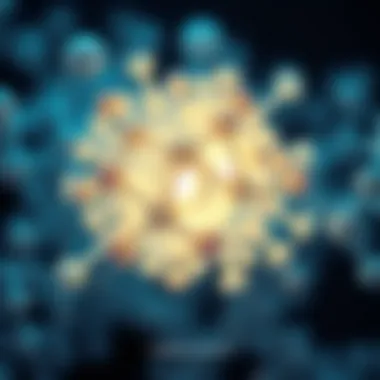

Promoter regions are the sequences of DNA that facilitate the initiation of transcription of a particular gene. The importance of promoter regions in the regulation of catalase expression is significant. These regions contain specific binding sites for transcription factors, which, as noted earlier, can activate or repress the transcription process.
The key characteristic of promoter regions is their variability across different organisms or tissue types. This variability allows for fine-tuning of catalase production according to the specific requirements of a cell in response to environmental conditions. A unique feature of these promoter regions is their capability to integrate signals from diverse pathways, enabling a coordinated response to oxidative stress.
Nonetheless, disturbances in the promoter regions can lead to altered catalase activity, affecting its role in cellular protection. If these regions are mutated or if their binding proteins are not functioning optimally, catalase expression may not meet the necessary demands for detoxifying hydrogen peroxide effectively.
Post-Translational Modifications
Post-translational modifications (PTMs) are chemical alterations done to a protein after it has been synthesized. These modifications can significantly affect an enzyme's activity, stability, and localization. In the case of catalase, PTMs such as phosphorylation, acetylation, and ubiquitination can modulate its expression and functional activity in various contexts.
For instance, phosphorylation can alter the enzyme's kinetics, while ubiquitination typically tags the enzyme for degradation, thus impacting its intracellular levels. This adds another layer of complexity to how cells regulate the antioxidant functions of catalase, ensuring it adapts effectively to changing physiological conditions.
Catalase and Human Health
Understanding the interplay between catalase and human health is crucial in grasping how this enzyme plays a significant role in cellular functioning and the overall maintenance of physiological homeostasis. Catalase serves as a formidable protector against oxidative stress, a condition characterized by cellular damage caused by free radicals. As we age or as our bodies undergo various stressors, the efficacy of catalase in detoxifying harmful substances like hydrogen peroxide is paramount. This section examines how catalase influences health and the implications of its activity on several disease states.
Role in Antioxidant Defense
Catalase is a powerhouse in the body’s arsenal against oxidative damage. It catalyzes the breakdown of hydrogen peroxide, a byproduct of metabolic processes that can become toxic at elevated levels, into water and oxygen. This reaction not only neutralizes a potentially hazardous substance but also contributes to the body’s antioxidant defense network. When hydrogen peroxide accumulates, it can lead to cellular dysfunction and inflammation, which are squabbles that benefit no one.
In conditions of heightened oxidative stress, securing sufficient catalase activity becomes increasingly vital. Consider, for instance, scenarios where exercise intensifies free radical generation. Here, catalase steps in like a hero, mitigating the damage and allowing cells to reclaim their functionality. Moreover, a well-regulated catalase level correlates with improved cellular health and longevity, making it a key element in therapeutic strategies aimed at promoting overall well-being.
Association with Disease States
The relationship between catalase activity and various diseases provides a fertile ground for research, especially regarding its role in modulating disease progression and onset. Here, we illustrate various disease states notably influenced by catalase levels.
Cancer
Cancer is an area of intense study regarding catalase's implications. Research has identified alterations in catalase expression in numerous malignancies. One of the hallmark traits of cancer cells is their heightened reliance on anaerobic respiration, which sets the stage for oxidative stress. Cancer cells utilize this stress as part of their metabolic peculiarities. With reduced levels of catalase, these cells may escape programmed death, resulting in tumor development and progression. On another note, manipulating catalase levels presents a unique avenue for therapeutic intervention, potentially rendering tumors more sensitive to treatment—certainly a compelling aspect worth exploring further in oncology.
Neurodegenerative Disorders
Neurodegenerative disorders, such as Alzheimer's and Parkinson's, manifest profound oxidative stress responses. Ironically, these conditions often evoke reduced catalase activity, contributing to neuronal death and systemic inflammation. The fundamental role of oxidative stress in these conditions frames catalase as a possible therapeutic target. Boosting catalase activity might stave off cellular death, thereby preserving cognitive function. Examining the intricate relationship between catalase and neuroprotection can open numerous doors in neurobiological research, shining a light on the hope for hand-in-hand preventative measures.
Metabolic Conditions
In metabolic diseases such as diabetes, oxidative stress is a known player that exacerbates the disease's progression. Experimental studies indicate that diabetic patients may exhibit diminished catalase activity. This decline exacerbates the complications commonly associated with diabetes, including vascular issues and organ damage. Thus, strategies aimed at enhancing catalase activity hold promise in alleviating the metabolic burdens. Exploring such avenues can aid in formulating comprehensive treatment protocols addressing the oxidative stress underpinning these conditions.
"Catalase not only serves as a simple detoxifying enzyme but plays a pivotal role in complex cellular regulations impacting diseases across the spectrum."
Catalase in Research and Applications
Catalase serves a pivotal role across various fields, including biotechnology and therapeutics, where its application can significantly impact both scientific research and practical solutions to health and environmental issues. This section delves into the importance of catalase in research and applications, highlighting its indispensable characteristics, benefits, and the implications of its use.
Biotechnological Uses
Industrial Applications
When we talk about industriial applications of catalase, we’re looking at a enzyme that really steps up to the plate in various manufacturing processes. One of its key roles is in the textile industry, where it helps to breakdown hydrogen peroxide used in bleaching, which can otherwise be harsh and contribute to pollution.
The prime characteristic of using catalase in this context is its efficiency in converting hydrogen peroxide into water and oxygen, which is much safer than leftover chemicals. This makes it a beneficial choice for companies eager to embrace sustainability without sacrificing product quality. It saves costs, minimizes waste, and enhances overall safety for workers.
Unlike some alternatives that may take longer to process or produce unwanted by-products, catalase acts quickly and cleanly.
However, one notable disadvantage might be its temperature sensitivity. If temperatures rise too high during the process, the enzyme can lose its effectiveness. Hence, careful control of environmental conditions is paramount.
Environmental Remediation
Environmental remediation is another domain where catalase comes into the limelight. Here, the enzyme plays a crucial role in treating wastewater, particularly by breaking down hydrogen peroxide that is often used as a disinfectant.
The significant aspect of Environmental Remediation lies in its ability to combat pollution more effectively. Catalase breaks down hydrogen peroxide directly in the water, leading to less toxic residuals. Hence, its use supports cleaner waterways and healthier ecosystems, making it a popular choice for environmental scientists tackling pollution.
A distinct feature is the versatility of catalase; it can adapt to various conditions and still perform its function. However, the downside is sometimes the enzyme itself requires specific operating conditions that could limit its scalability in large treatment facilities. This may pose challenges for rapid implementation at larger sites, highlighting the need for further research.
Catalase in Therapeutics
Drug Development
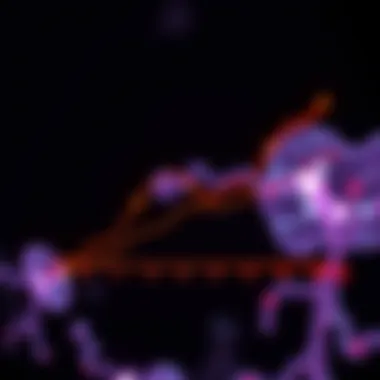
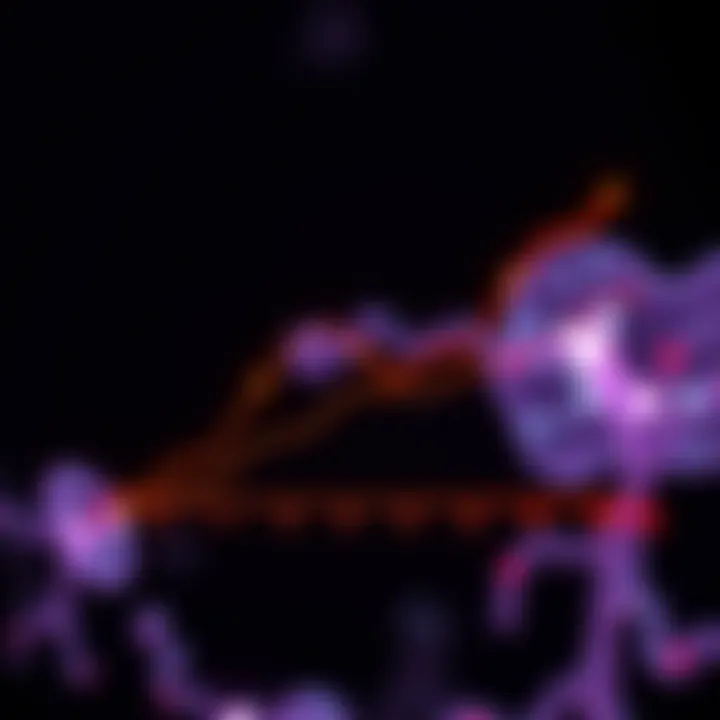
Catalase finds its place in drug development too, where its potential for producing drugs is garnering interest. Specifically, it assists in modulating oxidative stress, which is often at play in various diseases. Incorporating catalase into therapeutic drugs can target the oxidative damage at the cellular level, making treatments much more efficient.
The key characteristic in this context is its profound effect on enhancing the effectiveness of therapeutics aimed at conditions like cardiovascular diseases and diabetes. This makes it a beneficial addition to the pharmacological toolbox available to modern medicine.
Additionally, catalase can potentially reduce the side effects related to drug metabolism. It can help in mitigating toxicity levels, thereby enhancing patient safety during treatments. But a specific challenge could be the delivery mechanism of the enzyme to ensure it effectively reaches targeted areas within the body; substantial research is continuing in this area.
Gene Therapy
The utilization of catalase in gene therapy is another frontier being explored by researchers. It’s become evident that oxidative stress needs to be effectively managed when delivering gene therapy, as it can hinder the desired outcomes. Here, catalase may be employed in conjunction with other therapies to ensure oxidative balance is maintained during the delivery of genetic material.
The defining quality that makes gene therapy intriguing is the potential to correct genetic disorders at their source. This dual-action capability of using catalase combined with gene editing or other interventions offers substantial promise. Implications extend to a wide range of diseases, potentially transforming treatment for genetically linked disorders.
Still, the challenge remains with regulatory hurdles and the complexity of targeting the delivery precisely to the required tissues without off-target effects. As research continues, significant advancements can be anticipated, opening new avenues.
Comparative Analysis with Other Antioxidases
Antioxidases play a crucial role in maintaining oxidative balance within cells, and catalase stands as a key player among them. Understanding how catalase interacts with other antioxidases such as superoxide dismutase and peroxidases provides a fuller picture of antioxidant defenses. Such comparative analyses are essential for identifying specific roles, efficiencies, and unique mechanisms of action across these enzymes. By investigating these relationships, researchers can develop targeted interventions that harness the unique strengths of each enzyme, potentially leading to advances in therapeutic strategies.
Superoxide Dismutase
Superoxide dismutase (SOD) serves as the first line of defense against reactive oxygen species (ROS), particularly the superoxide radical. This enzyme catalyzes the conversion of superoxide into hydrogen peroxide and molecular oxygen. While catalase predominately breaks down hydrogen peroxide into water and oxygen, the initial reaction mediated by SOD is interdependent. Without SOD, there would be an accumulation of superoxide, which could overwhelm cellular mechanisms, resulting in oxidative damage.
The importance of comparing catalase with SOD lies in understanding their complementary functions. Catalase is momentous when decomposing hydrogen peroxide formed by the action of SOD. Researchers have found that effective antioxidant defenses involve a delicate balance between these enzymes. For instance, in conditions of oxidative stress, increases in SOD activity can lead to a surge of hydrogen peroxide, necessitating enhanced catalase activity.
"Catalase and SOD together provide a complementary defense mechanism, addressing different types of ROS effectively."
This relationship has implications in various health conditions. For example, in neurodegenerative diseases, where oxidative stress is a significant factor, the balance of SOD and catalase activity may determine the extent of cellular damage. Thus, targeting both enzymes could open new pathways for therapeutic developments in such conditions.
Peroxidases
Peroxidases represent another class of enzymes that share a functional overlap with catalase in combating oxidative stress. These enzymes catalyze the reduction of hydrogen peroxide and other peroxides, using a variety of electron donors. Unlike catalase, which specifically targets hydrogen peroxide and is relatively quick in eradicating it, peroxidases can utilize a range of substrates, including organic peroxides.
The comparative analysis with catalase underscores that while both classes of enzymes address hydrogen peroxide, they do so with different mechanisms and efficiencies. For instance, peroxidases are often more versatile and can act under a wider array of metabolic situations, but they are not as efficient as catalase in degrading hydrogen peroxide at higher concentrations. Similarly, many peroxidases work closely with other antioxidant systems, highlighting the collaborative nature of these enzymes in combating oxidative damage.
Additionally, the roles of peroxidases extend beyond mere detoxification; they are involved in signaling pathways pertinent to inflammation and cellular responses to stress. The differences in enzymatic action between catalase and peroxidases can be seen in the context of diseases where oxidative stress plays a critical role.
In summation, exploring the relationships between catalase, superoxide dismutase, and peroxidases deepens our understanding of oxidative stress management in biological systems. As researchers aim to unravel these interactions further, it becomes clear that combined strategies are crucial for optimizing antioxidant defense mechanisms, leading to improved health outcomes in various clinical scenarios.
Future Perspectives on Catalase Research
As the scientific inquiry into catalase continues to unfold, the future perspectives of this research field highlight its critical importance in understanding both basic biological processes and complex disease mechanisms. Catalase is not merely an enzyme involved in the breakdown of hydrogen peroxide; it sits at the crossroads of biochemical research, encompassing fields like genomics and protein engineering. These changing tides within research underscore the need for fresh insights and innovative approaches to harness the power of catalase in health and disease.
Emerging Trends
Researchers are continuously identifying novel avenues for the utilization of catalase in various applications. Recent studies emphasize engineering catalase variants with enhanced stability or activity for biotechnological applications.
Key trends worth noting include:
- Integrative Approaches: There is a growing trend toward interdisciplinary research that merges catalase studies with genetics, biochemistry, and pharmacology, leading to a more holistic understanding of its effects on health.
- Nanotechnology: Catalase is being explored within nano-carriers to provide targeted antioxidant therapy, showcasing potential therapeutic benefits against oxidative stress-related diseases.
"The future of catalase research is not just about what catalase can do, but how it can be revolutionized to address contemporary health challenges."
Potential Areas of Study
Functional Genomics
Functional genomics stands out as a compelling aspect of catalase research. This field delves into understanding the gene expression and regulation of catalase. By employing advanced techniques like CRISPR-Cas9, researchers are now capable of targeting specific genes related to catalase activity.
- One key characteristic of functional genomics is its ability to elucidate the interplay between catalase and other oxidative stress-related genes. This feature lends itself well to establishing its wider implications across various biological systems.
- Moreover, the unique capacity to manipulate genes brings forth a significant advantage: the potential for developing therapies tailored to specific conditions where catalase plays a protective or detrimental role. By generating altered expressions or functions of catalase, possible therapeutic targets can be identified with potential benefits for cancer treatment or neurodegenerative diseases.
Protein Engineering
Protein engineering is another frontier ripe for exploration within the realm of catalase research. This approach can be leveraged to refine catalase for optimized activity in industrial processes or therapeutic applications.
- A distinguishing feature of protein engineering is its capability to create site-directed mutants that can enhance enzyme stability under extreme conditions, thereby expanding the range of applications for catalase.
- Although it can come with its challenges, such as substantial time requirements for optimizing variants, the potential outcomes far outweigh the costs. The synthesis of tailored catalase enzymes promises significant advancements in biocatalysis and pharmaceutical development, offering innovative solutions to persistent issues related to oxidative damage.
In summary, the future of catalase research appears bright, with emerging trends and potential areas of study set to enrich our understanding of this critical enzyme. As these research trajectories develop further, they may pave the way for breakthroughs that enhance human health and biotechnology.
Finale
Understanding catalase activity is essential not only for grasping fundamental biochemical processes but also for appreciating its broader implications within health and disease. The discussions throughout this article have illuminated various aspects of catalase, from its intricate structure to the regulatory mechanisms governing its expression. Key findings have emerged that stress the enzyme's role in combatting oxidative stress and its association with various pathological conditions, including cancer and neurodegenerative disorders.
Summary of Findings
In summary, catalase is a crucial enzyme that plays a vital role in protecting cells from oxidative damage by breaking down hydrogen peroxide into water and oxygen. This enzyme's activity is influenced by environmental factors such as pH and temperature, as well as the concentration of substrates and inhibitors. The genetic control of catalase expression, enhanced by post-translational modifications, further underscores the complexity of its regulation. A thorough grasp of these elements helps to clarify how catalase functions in human health, spotlighting its importance in antioxidant defense systems and its connections to various diseases. In terms of applications, the findings reveal catalase's contribution to biotechnological advancements and therapeutic developments, showcasing its versatility and significance.
Implications for Future Research
Looking ahead, there are numerous potential avenues for future study that may shed greater light on catalase. Emerging trends in protein engineering and functional genomics present opportunities to enhance our understanding of how catalase can be manipulated or used in therapeutic contexts. Additionally, exploring the relationships between catalase dysfunction and diverse biological systems can provide insights that lead to innovative treatments for oxidative stress-related diseases. It is also worth investigating the potential for catalase in environmental remediation efforts as we seek sustainable solutions to combat pollution.



